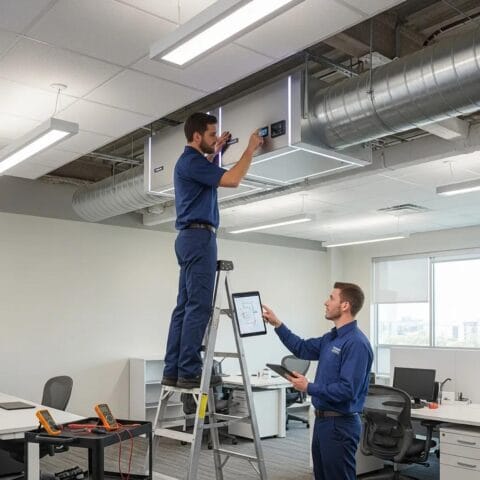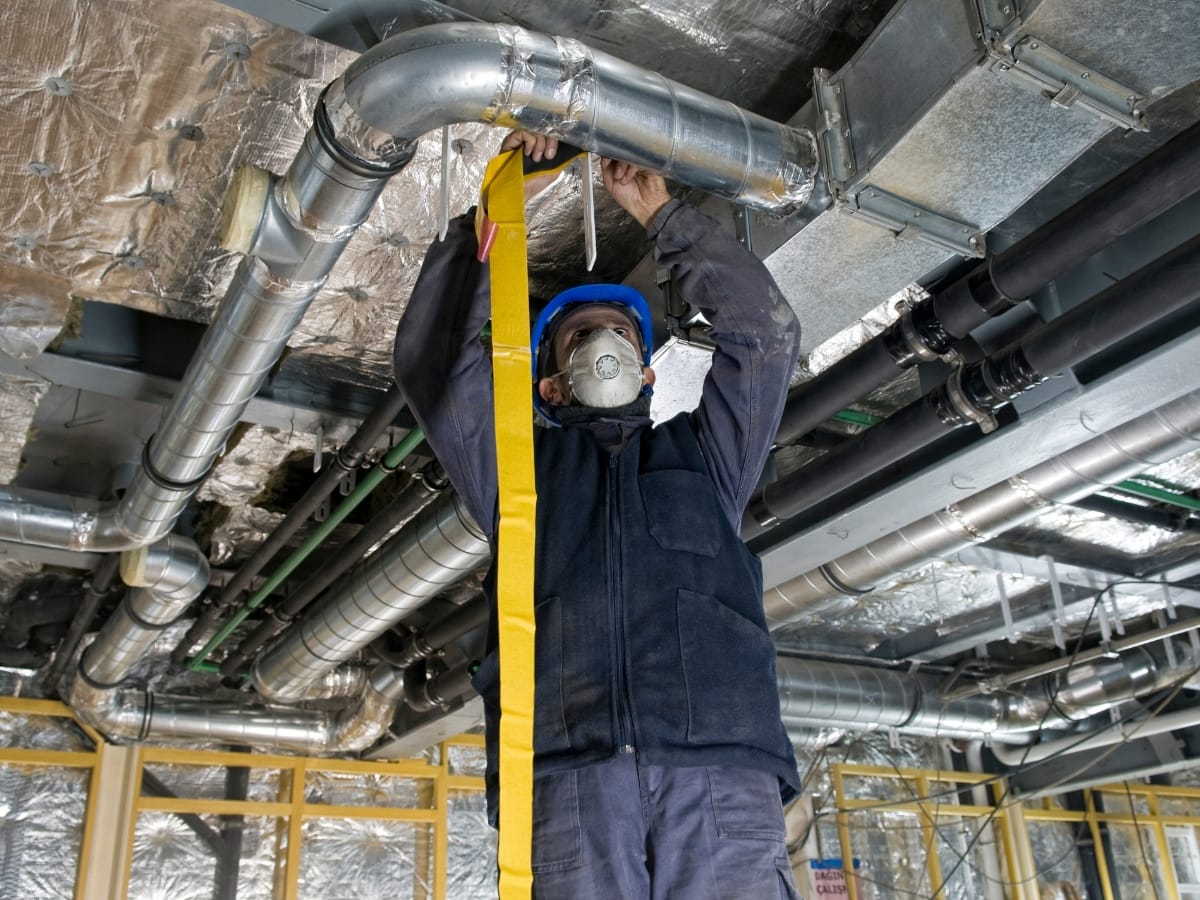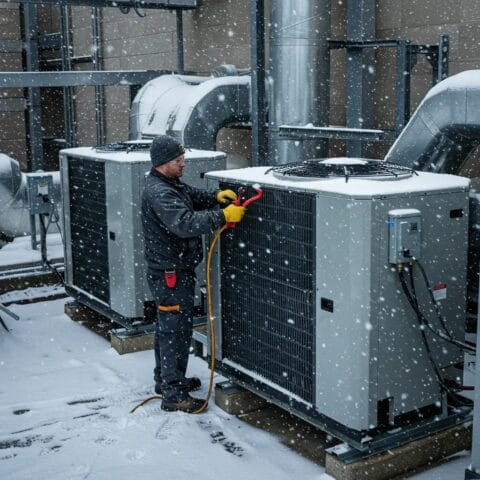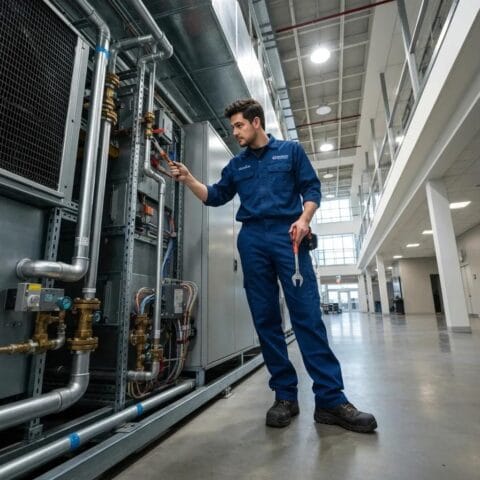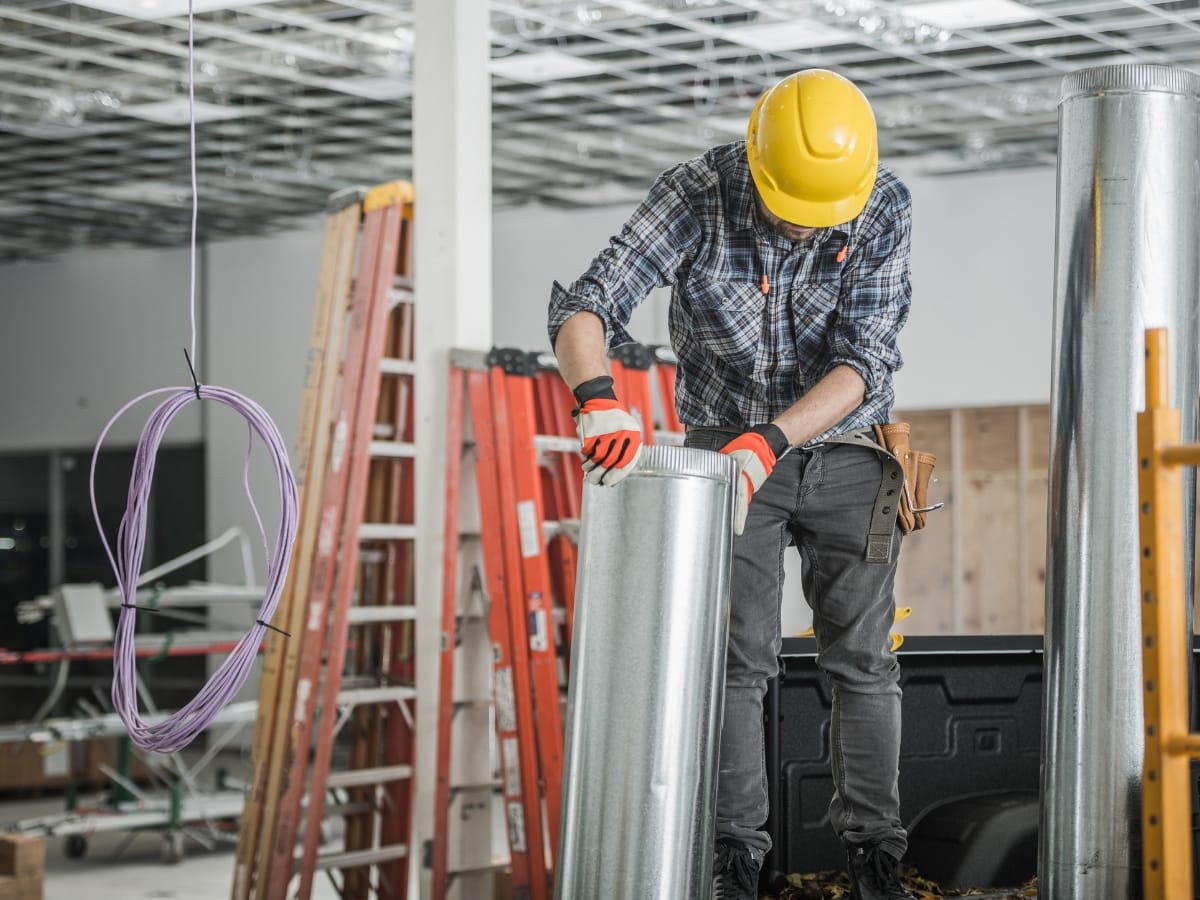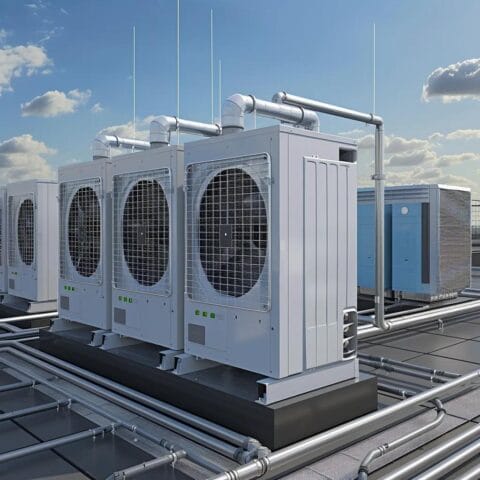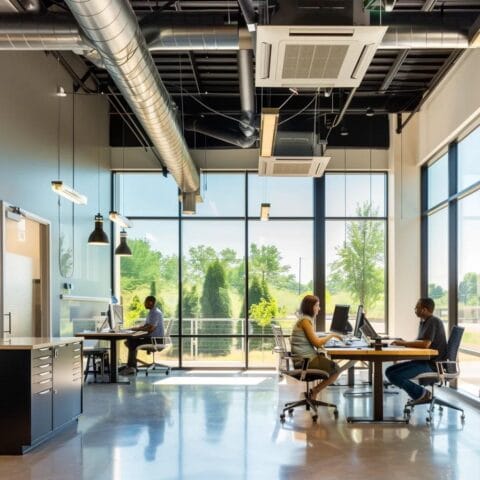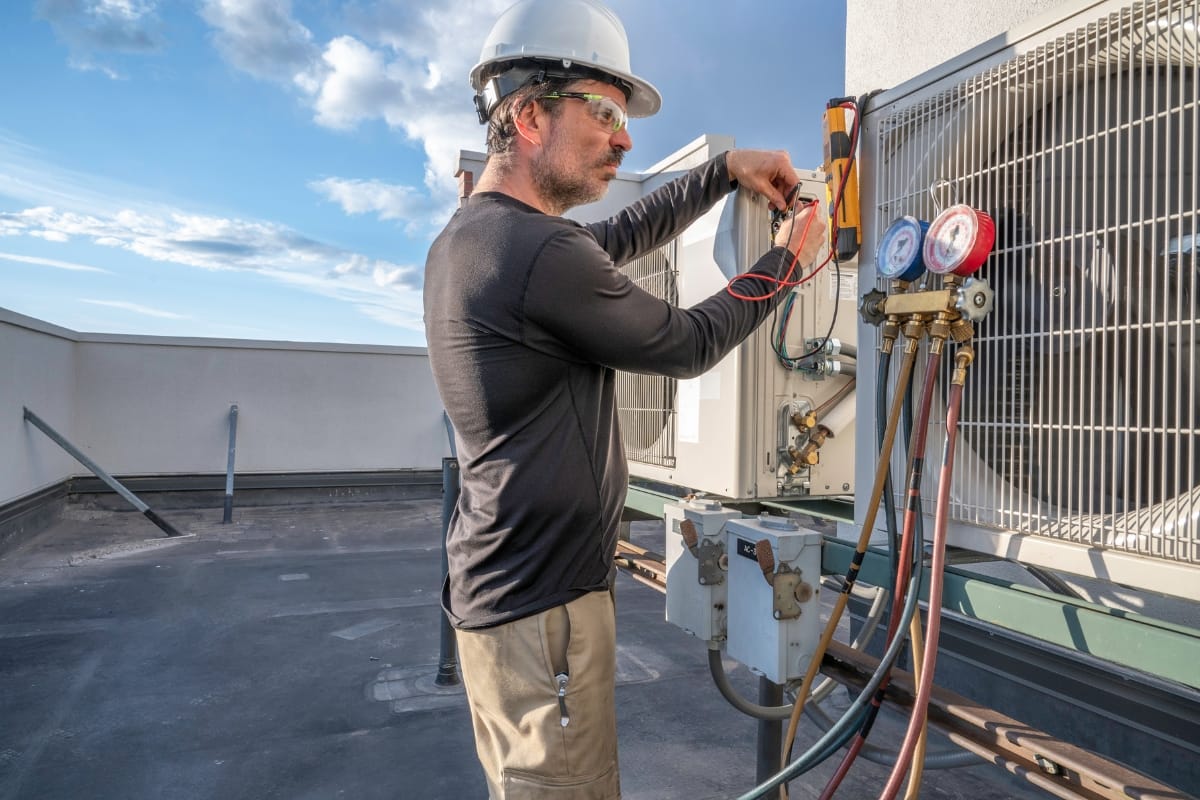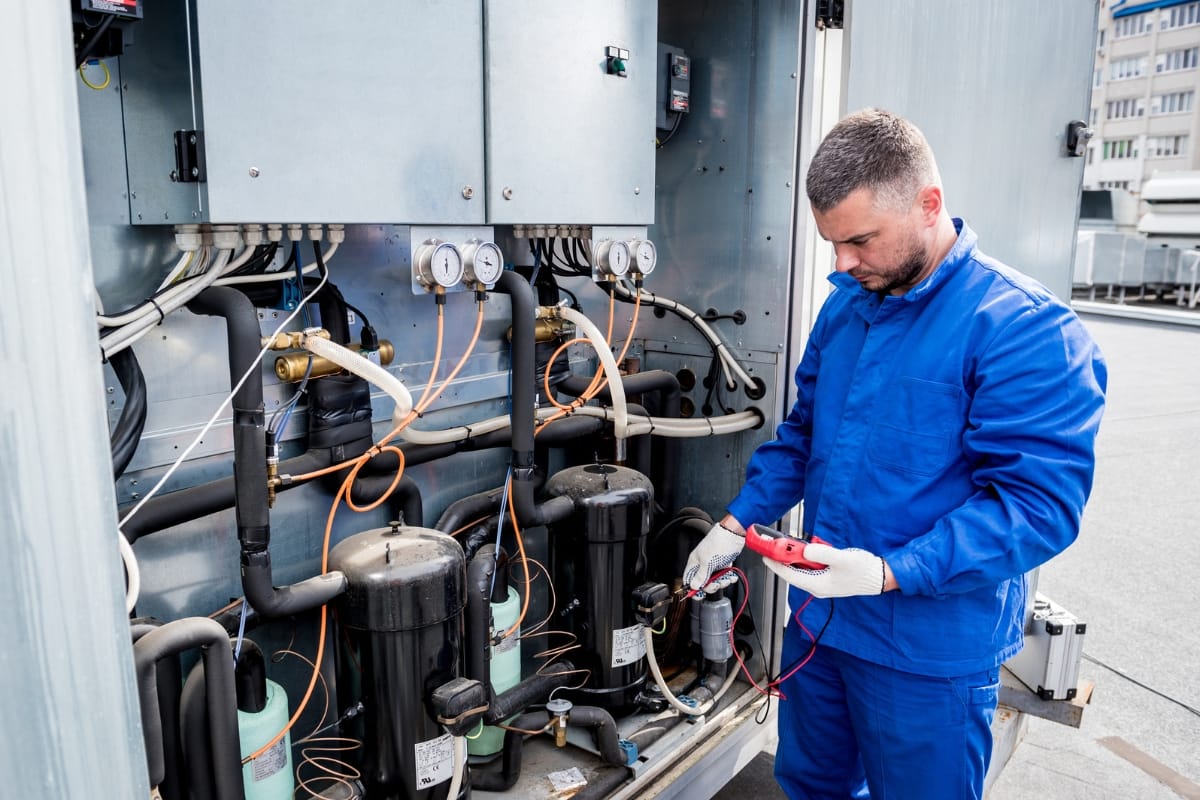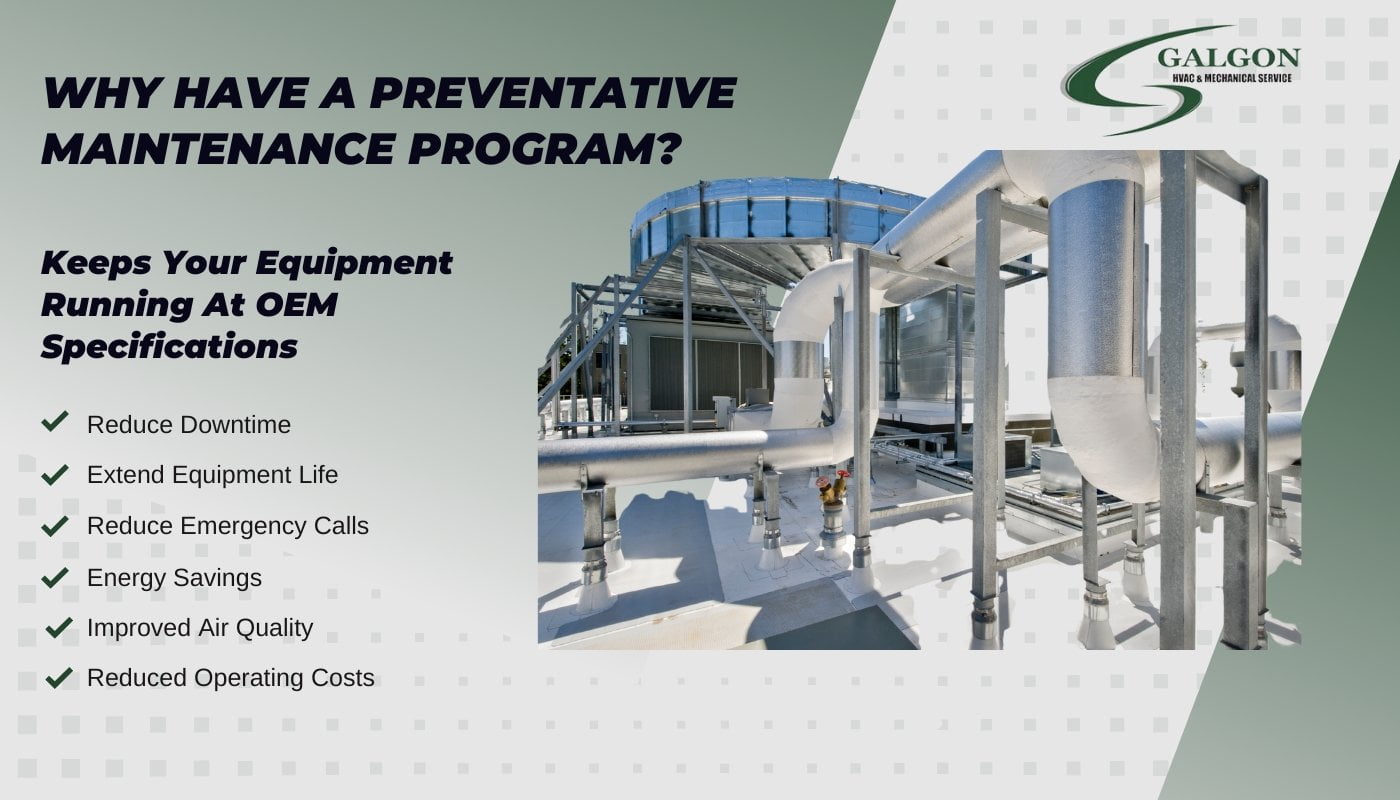Types of HVAC Filters
Indoor air quality is a very important component to any commercial/industrial building and facility. Finding and using the proper filter in your facility can make all the difference for the building tenants and employees. These are the different kinds of air filter you can use in your commercial HVAC equipment.
There are seven commonly used air filter types:
- HEPA filters
- UV light filters
- Electrostatic filters
- Washable filters
- Media filters
- Spun glass filters
- Pleated filters
The materials air filters are made of vary from fabrics to fiberglass. Filters are also rated using the Minimum Efficiency Reporting Value (MERV), which was developed by the American Society of Heating and Refrigerating and Air Conditioning Engineers (ASHRAE). The ratings range from 1 to 16 and give you an idea of how well the filter can trap pollutants that are as small as 0.3 microns and as large as 10 microns, with 16 being the most effective.
- HEPA FILTERS
High-efficiency particulate air (HEPA) filters are recommended by the U.S. Department of Health because they are able to remove at least 99.97% of airborne allergens and pollutants — including mold spores and dust that are as small as 0.3 microns. They’re able to remove even the smallest microns or airborne particles, including tobacco and bacteria.
- UV FILTERS
UV filters/ UV lights use short-wave ultraviolet light to kill bacteria and viruses. When air passes through the HVAC unit, the UV lights will disinfect it with radiation. UV filters are excellent for killing microorganisms that could be hazardous to your health. These lightbulbs generally need to be replaced every year.
- ELECTROSTATIC FILTERS
Using small cotton and paper fibers, electrostatic filters create static that acts as a magnet for dust and other airborne particles. The magnetism is strong enough that it keeps these particles from spreading throughout your facility. They are available as disposable as well as reusable. When it comes time to change the filters, you can decide whether to wash and reuse them or to get brand new ones.
- WASHABLE FILTERS
While certain types of air filters come with reusable and disposable options, washable filters are an environmentally friendly way to save money. These are usually found in mini-split systems and can be used as an alternative to buying new ones every few months.
Washable filters need to be maintained well to ensure they work as they should. It’s very important to make sure the filter is fully dry before putting it back in. Even the slightest bit of moisture left can lead to mold and mildew developing on the filter and then put into the space you breathe Failure to maintain a washable filter will reduce its effectiveness and does not have a high MERV rating.
- MEDIA FILTERS
When it comes to air filters for HVAC systems, media filters can provide more benefits than standard filters with high MERV ratings. Media filters provide the same level of filtration as a high-MERV filter, but they do it without the negative consequences of airflow or static pressure. Instead, media filters have a greater surface area, which successfully prevents significant static pressure while providing better filtration.
- Fiber GLASS FILTERS
Strands of fiberglass are spun together to create this type of filter, which is one of the most common types of HVAC filters. It comes standard in most HVAC units because it is extremely cost-effective, disposable and it protects HVAC systems from debris. These filters aren’t what you would want if you wanted to improve air quality since they are unable to strain very much and can only trap some dust and allergens.
- PLEATED FILTERS
Polyester fabrics or cotton folds are two HVAC filter materials used in pleated filters. Pleated filters have a MERV rating between 5 and 13.
While they can effectively filter dust and other airborne pollutants, they provide low air filtration and are less resistant to airflow.
The pleats in these filters give them an advantage over non-pleated options because they increase the filter’s surface area for better filtering. Filters with more pleats will provide better filtering than those with fewer pleats, trapping even difficult allergens and pollutants. You would need to get these changed out every 3-6 months.


